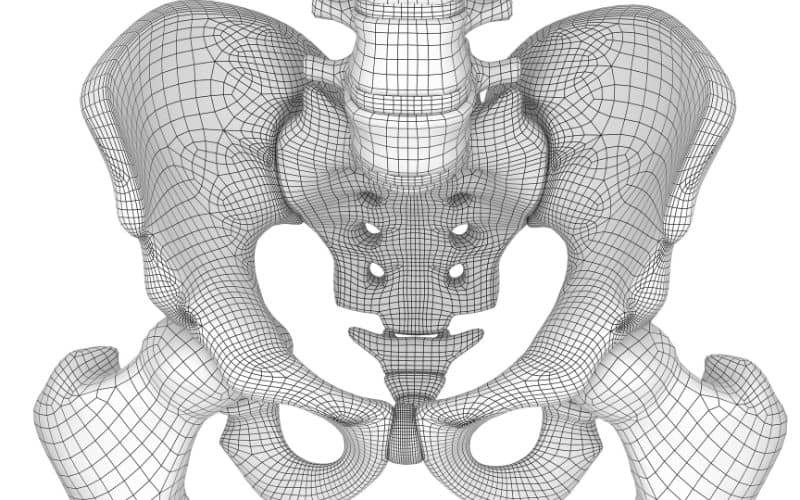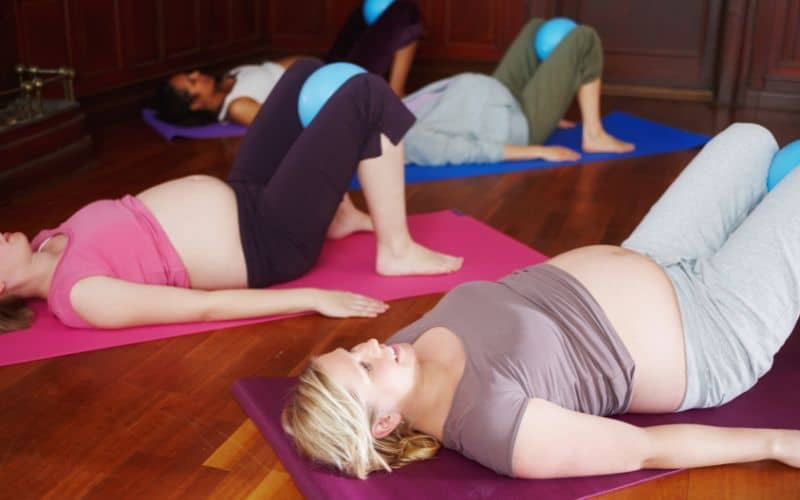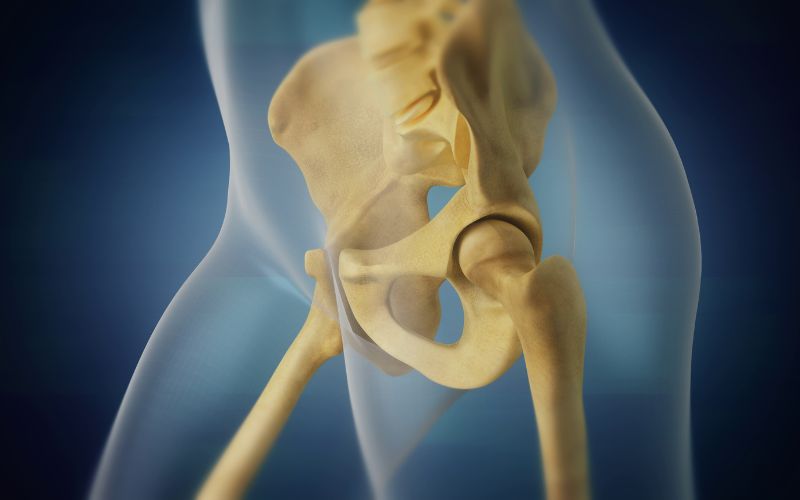
29 Jul Complete Guide to Kegel Exercises for Men and Women | Useful Tips
Have you heard of kegel exercises?
Not yet?
Well then, you’re a beginner and it’s high time you should know what are kegel exercises and what benefits they offer.
Kegel exercises are for both men and women and is useful for those looking to keep their pelvic floor muscles healthy.
Apart from overall fitness, the benefits of kegel exercises for both men and women may help you ward off many pelvic issues.
So, let’s get into this easy Kegel guide for beginners and find out all about it.
What are Kegel Exercises?
Kegel/Pelvic floor exercises are mainly performed to strengthen the pelvic floor muscles.
It is a great way to improve and maintain the functioning of the bowels and bladder. It also affects your small intestine and rectum.
Notably, some pelvic floor disorders lead to too tight or too active pelvic muscles.
Too tight or too active pelvic muscles make it operate in an overactive state. Hence, it becomes difficult to contract the pelvic muscles when needed.
This happens not only because of the fatigued muscles but also because of the lack of range to contract.
At this point, performing kegel exercises helps maintain a balance.
What Does Kegel Exercises Do?

Kegel exercises basically strengthen your pelvic muscles.
If you don’t know, pelvic floor muscles include the muscles around the bottom, bladder, vagina, and penis.
As a result, kegeling helps prevent disorders and health issues related to the pelvic region.
Two of the most important pelvic issues that can get resolved using kegel exercises are:
- Pelvic floor dysfunction
- Pelvic organ prolapse
Here’s how…
#1. Pelvic Floor Dysfunction
The pelvic floor supports your pelvic organs including the bladder, uterus, and bowel.
Weak pelvic muscles can give rise to bladder problems. This includes urinary incontinence and an overactive bladder.
By the same token, too tight pelvic muscles can lead to muscle spasms.
Provided that, pc muscle exercises can help prevent these pelvic floor dysfunction.
#2. Pelvic Organ Prolapse
Sometimes, pelvic muscle tissues and cells fail to support the pelvic organs, resulting in the slipping of 1 or more pelvic muscles into the vagina. This is what we call pelvic organ prolapse.
Although it is not life-threatening, it can cause pain and health complications.
Pelvic floor exercises target the kegel muscles and help you maintain the muscle tissues there.
Well, the above points give just a sneak peek into the pelvic floor exercises benefits.
On this note, let’s proceed to discuss it in detail.
8 Kegel Exercise Benefits
The location of PC muscles is in such an area that performing kegel exercises can have a direct and indirect effect on a lot of issues.
Apart from pregnancy, menopause and aging also affect the pelvic organs and muscles.
As a result, there’s pelvic floor dysfunction and pelvic organ collapse.
Thankfully, kegeling can be beneficial in keeping these at bay.

Some of the benefits of kegel exercises are related to:
- Pregnancy and childbirth
- Sexual functions
- Physical fitness
- Menopause
- Childbirth recovery
- Bladder leakage
- Hip and back support
- Erectile Dysfunction (ED)
A detailed explanation of these 8 benefits is right below for further reading.
#1. Kegel Exercises for Pregnancy
Pelvic organ prolapses cause the pelvic organs to fall in the vagina.
This, as a result, makes it difficult for women to get pregnant.
Not only this but it also affects childbirth through both the vagina and C-section.
Hence, kegeling, by preventing the POP (Pelvic Organ Prolapse), enables comfortable pregnancy and childbirth.
#2. Kegel Exercises Benefits Sexually
Sexual benefits of kegel exercise exist for both men and women.
Kegel exercises for women tighten the vagina and make them experience better sex.
So, once you know how to do kegel exercises to tighten, you can enjoy better sex.
It also helps improve the intensity as well as the duration of orgasm.
Moreover, the benefits of Kegels for guys also include improved sex.
PC muscle exercise improves the blood flow in muscle and groin, hence increasing pleasure.
#3. Overall Fitness
Weight gain, prolonged sitting, pregnancy, and injury can take a toll on the body.
It not only affects physical fitness and strength but also weakens the core.
Regular pelvic muscle exercise can help maintain your posture and can even make natural childbirth easy.
Furthermore, you get to lose lower abdominal fat, which is a problem area for many women.
#4. Improves Pelvic Muscles During Menopause
Menopause wreaks havoc on a female’s entire body, and pelvic muscles are not left untouched.
Fluctuating estrogen levels during menopause restrict the flow of blood toward the pelvic floor.
This, as a result, reduces muscle tone and strength.
Kegel exercises keep the blood flow right and help reverse the effects of menopause on pelvic floor muscles.
#5. Recovery from Child Birth
Whether the childbirth is through the vagina or C-section, pelvic muscles become weak.
Vaginal delivery even results in muscle tear and bone shift.
Nonetheless, the good news is—it can get better.
Performing pelvic floor exercises during pregnancy can help heal the muscles.
It can even bring back the lost strength as well. However, it’s important to consult the health care provider before you perform pelvic exercises during pregnancy.
MOST READ: Exercises for New Moms to Heal Diastesis Recti (Abdominal Separation)
#6. Cures Bladder Leakage
Bladder leakage or urinary incontinence is one of the primary effects of pelvic floor dysfunction.
When pelvic muscles are not strong, it leads to stress urinary incontinence.
Strenuous situations like lifting heavyweight, sneezing, and coughing might lead to bladder leakage.
Here, Kegel exercises are great for treating urinary incontinence.
#7. Improves Back and Hip Support
The pelvic floor muscles are connected to the abdominals and the deep hip rotators.
Hence, kegel exercises can provide optimal strength to the back and hip. It affects the joints of the lower tailbone, spine, and pelvis.
Interestingly, kegel exercises during pregnancy can provide the expecting mother relief from back pains after the child’s birth.
#8. Treats Erectile Dysfunction
Do Kegels work when it comes to erectile dysfunction and ejaculation?
Well, yes!
Kegel exercises are even used to treat erectile dysfunction in men.
When accompanied by lifestyle changes and PC muscle exercises, men can treat ED.
Additionally, male kegel exercises are also great in treating ejaculation and enabling better sex.
In recent years, kegel exercises have become a part of a serious conversation among both men and women.
With its life-changing benefits, kegel exercises are especially good for some people.
Who Should Do Kegel Exercises?
Kegel exercises are like strength exercises for the pelvic muscles.
As a result, it supports the pelvic organs naturally and maintains their stability.
Considering that, there are certain health conditions that put pressure on the pelvic organs. In such a case, kegel exercises can be especially beneficial.
Some of the conditions that can be benefited from pelvic muscle exercise are:
#1. Anyone Struggling with Weight Gain
Excess weight, especially around the abdomen, puts a lot of pressure on your pelvic organs.
Those dealing with obesity, visceral fat, and weight gain, in general, can perform pelvic exercises.
It can not only tighten the pelvic organs but also help keep the abdominal weight in control.
#2. Those Who Have Had Surgery in Pelvic Area
Surgery in the pelvic area can lead to Pelvic Organ Prolapse and Pelvic flood disorder.
Hence, those who have had surgery in the area, for instance C-section, can do kegel exercise.
#3. Aging Folks
Besides all the medical conditions, aging is something that naturally causes the pelvic floor muscle to loosen.
The rectum and anus naturally weaken with age. Adding to it, the lack of estrogen also affects the pelvic muscles.
Hence, it’s strictly recommended for elderly people to do pelvic muscle exercises.
Keeping the pelvic muscles fit can naturally prevent urinary leakage in the elderly.
Now, granted the above points, can we say that kegel exercises are safe, or can they cause damage?
Are Kegel Exercises Safe?

Men’s kegel exercises and pelvic floor exercises for pregnancy have recently gained momentum.
It is true that, if performed correctly, it has numerous benefits to deliver.
However, one must keep in mind that it’s not for everyone.
Also, the effectiveness of the kegel exercises depends on the physiological issue.
For some, it may accelerate the symptoms and put them at a greater risk of pelvic disorder. Example, if you have an overactive pelvic floor, you are more likely to witness severe conditions on kegeling.
Therefore, people must get diagnosed with pelvic disorders first before they start the exercises to avoid any complications.
If you are medically recommended to do kegeling, it can obviously work.
Also, you must pay attention to the techniques and other details to reap maximum benefits.
What Should You Know Before Doing Kegel Exercises?
Although kegel exercises take only 30 minutes of your day, you must know a few things prior to performing them.
Here are certain things to keep in mind before doing kegel exercises.
#1. How to Perform Kegel Correctly
If you’re a beginner or if you feel that kegel exercise is not working for you, you may be doing it wrong.
Hence, you need to first find out how to do the kegel exercise.
You can follow instructions from write-ups and videos. You can also take guidance from a pelvic floor physiotherapist.
Adding to it, there are also certain apps that can help you with the techniques.
#2. How to Find Pelvic Floor Muscles
This is the only hardest part of the kegel exercise. Most of the time, people are unable to find their muscles.
This is quite natural and happens because pelvic floor muscles are internal and hard to feel and visualize.
This is among the primary reasons why people often are unable to do kegeling at the first attempt.
According to a survey, nearly 30% of women suffering from urinary incontinence are unable to kegel at first.
They contract hips and glutes muscles instead of pelvic floor muscles.
Having said that, it’s only justified to look up how to do kegel exercises.
How to Do Kegel Exercise?
There are two basic steps in doing kegel exercises.
#1. Finding the Pelvic Floor Muscles
#2. Contracting the Pelvic Floor Muscles
To begin with, locating your pelvic floor muscle is the only important and tricky part of kegeling.
#1. Finding the Pelvic Floor Muscles
Start by lying down or resting in a comfortable position and letting your abdominal muscles relax.
Men:
- Imagine you’re trying to stop the urine stream and passing flatulence at the same time.
Women:
- Pretend to tighten the vagina as you would around a tampon.
- Or imagine you’re trying to suddenly stop the urine while urinating.
You should feel contractions or tightness only in the lower part of the abdomen.
Now, once you find the muscles, the next step is contracting and relaxing the pelvic floor muscles.
#2. Practicing Kegel Exercise
You can do kegel exercise either while lying back or simply when you are standing or sitting.
- Squeeze the pelvic floor muscles for 3 seconds and relax them for another 3 seconds.
- Perform it 10 times.
This is 1 set.
You can repeat it 5 times and do it 3 times a day.
Also, once you get a hang of the motions, you can increase the reps.
However, there are some cases where it’s not really possible to perform kegel exercises.
What if you are not able to do the kegel exercise?
Are there any complications and precautions that you need to keep in mind?
What If I’m Not Able To Do Kegel Exercises? Complications
There’s a sizeable chance you may not be able to do Kegel exercises.
The reason could be anything from wrong technique to complications.
Hence, there are certain complications and precautions to keep in mind if you’re unable to do kegeling.
#1. You might be squeezing the wrong muscles.
#2. You are pushing the pelvic floor muscles instead of squeezing them.
#3. You are practicing it at the wrong time.
#4. Your pelvic floor disorders require more than kegel exercise.
Now, considering the above points, here are certain precautions to take.
#1. Consult a Pelvic Floor Physiotherapist before attempting the exercises yourself.
#2. Activate the pelvic floor muscles by lifting them up and in only.
#3. You can try kegel training tools.
Doing the Kegel exercise the right way may take some time. Nonetheless, certain tips and tricks can help you do it easily.
This can also help you keep certain health complications like back pain at bay as well.
Useful Tips to Do Kegel Exercises (for Beginners)
Some of the tips that can help you with better kegeling are:
- Make sure that your bladder is clear.
- Try it in both the standing and the lying back positions.
- Make a slow start and increase the strength and endurance gradually.
- Avoid holding your breath.
- Avoid squeezing the inner thighs and lower back muscles.
- Kegel training tools may not work as advertised. Hence, it is better to not completely rely on such tools if you’re using one.
- When doing Kegels during pregnancy, it’s strictly advised to always consult your gyno to avoid any complications.
- It is vital to not make it a habit to use kegel exercise to start and stop urination. You any end up contracting UTI.
When done properly, kegel is a great exercise that can help you rid of many pelvic muscle issues.
So, how often can you do this to see the results?
When to Do Kegel Exercises and How Often?
You can do kegeling in the morning, afternoon, and evening.
For better results, attempt the reps 10 times.
The best part of the kegel exercise is that it doesn’t require you to perform any complicated moves.
All you have to do is look for a quiet place in order to concentrate on contractions and relaxations. And that’s it; you are all set to perform kegel.
If you’re wondering how long Kegel exercises take to work, well, you need to be patient.
It is not a magical spell and requires nearly 4-6 weeks to witness significant changes in your symptoms.
And if you’re not able to do kegeling at all, some kegel alternatives may work for you.
Alternatives of Kegel Exercise
If you are not diagnosed with any pelvic disorder but still want to keep your pelvic floor muscles healthy, what should you do?
Well, you can perform such an exercise that targets the same muscles.
It is also of great help for those who are completely unable to do kegel exercises.
Some of the alternatives to Kegel exercises are:
#1. Squats
This is the most commonly used pelvic floor muscle exercise woman do.
Even the research supports the fact that squats can strengthen the pelvic floor muscles of women and children.
Shallow and narrow squats put more pressure on the pelvic muscles and help strengthen them.
#2. Jumping Jacks
It is the easiest warm-up exercise. Notably, when you jump, it naturally squeezes the pelvic muscles.
Hence, performing jumping jacks not only makes you ready for the workout but also keeps your pelvic muscles tight.
#3. Happy Baby
The happy baby position may seem a little intense.
However, while doing this, try to drop your tail bone on the floor and lift your legs up. This position stretches your pelvic muscles.
As you breathe in and out, you can feel contractions and relaxation in your pelvic floor muscles.
#4. Clamp Shell
Clamp shell is yet another great alternative to kegel exercises.
It requires no equipment and is one of the best pelvic exercises during pregnancy.
It can be easily done by even pregnant women.
When you open and close the legs, it puts pressure on the pelvic floor muscles. So, in the long run, it provides the same benefits as kegel exercises.
#5. Treatments and Therapies
Laser and radiofrequency therapies are also available for treating pelvic floor disorders.
Although these treatments are expensive, they are still the priority of many. The reason being is fast results and a non-surgical program.
A trained physical therapist is also an option. However, because of the limited physical therapists, it gets expensive to hire one.
So, there you have it.
These alternatives help if you really can’t do Kegel exercises at home.
But if you can, just a few minutes of kegel can help you reduce pelvic issues as you get older.
Take preventive measures and stay tight and healthy for as long as possible.
Ending Arguments
Pelvic muscles support the reproductive organs and affect sexual health as well.
With that in mind, it is safe to say, Kegel exercise benefits are not only limited to pregnant women. It can also help with better sex and overall health.
All you need to do is learn how to do kegel exercise and tips to do it properly.
Apart from PC muscle exercise, you need two more things…
Practice and Patience!
It’s your body and you know it better. Find what works for you and stick to that.
Hopefully, you’ve found this blog informative. If you liked the content, share your views about kegel exercises in the comments section below. Or you may also drop your questions and someone from our team will get right back to you.



No Comments